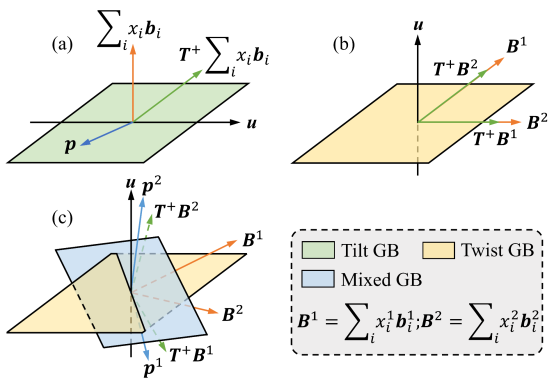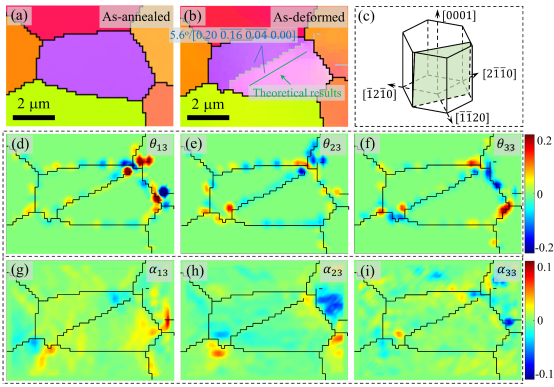Recently, Prof. Yipeng Gao, Prof. Min Zha, and Prof. Hui-Yuan Wang from the School of Materials Science and Engineering at Jilin University made new progress in the field of metal grain boundary plasticity. Their research results, titled "Deformation-induced grain rotation and grain boundary formation achieved through dislocation-disclination reactions in polycrystalline hexagonal close-packed metals," were published online on March 11, 2023, in Acta Materialia.
Conventional plastic deformation mechanisms in metals include dislocation plasticity, twinning plasticity and transformation plasticity etc. In addition, grain boundary (GB) mediated plasticity (e.g., grain rotation and GB sliding) in polycrystals has also been widely observed in polycrystalline materials. In the literature, it has been reported that GB mediated plasticity can not only carry plastic strain, but also accommodate the inter-granular incompatibility arising from crystal anisotropy. In certain cases, GB mediated plasticity can even dominate over conventional dislocation plasticity, e.g., in nanocrystalline metals or at elevated temperatures. Despite the occurrence of the grain rotation deformation mechanism being confirmed by numerous experiments, there is still a lack of rigorous mathematical methods to quantify grain rotation and predict deformation texture.
To address this issue, a systematic approach to quantify grain/subgrain rotation induced by deformation has been developed. By analyzing the topological correlation of dislocations and disclinations, we introduce Rotation Factor, which is a necessary factor besides Schmid Factor, to determine the preferential activation of slip systems and rotation tendency under a given external loading. Grain/subgrain rotations and corresponding GB structures can be predicted through the pseudo-inverse solution of the reformulated Frank-Bilby equation. Systematic classifications of grain/subgrain rotation and GB formation have been raised for HCP metals, with respect to different types of constitutive dislocations, which has been validated by Electron-Backscattered Diffraction (EBSD) characterizations in Mg alloys. This work not only proposes a theoretical method for studying grain/subgrain rotation based on the topological reaction between dislocations and disclinations, but also provides insight into the plastic/superplastic deformation mechanisms of polycrystalline metals.
The first author of this article is Chunfeng Du, a PhD student in Materials Processing Engineering. The corresponding authors are Prof. Yipeng Gao and Prof. Hui-Yuan Wang from the School of Materials Science and Engineering at Jilin University. This work was supported by the National Natural Science Foundation of China (NSFC) General and Key Programs.
Full text link of the paper: https://doi.org/10.1016/j.actamat.2023.118855

Fig. 1: Classification of Grain Boundaries Formation: (a) Tilt Grain Boundary, (b) Special Twist Grain Boundary, (c) Mixed Grain Boundary and General Twist Grain Boundary.

Fig. 2: Formation of small angle grain boundaries by two sets of dislocations: (a) IPF map of annealed sample, (b) IPF map of deformed sample, (c) theoretically predicted grain boundary, (d-f) determination of disclination density components, (g-i) determination of geometrically necessary dislocation density components.